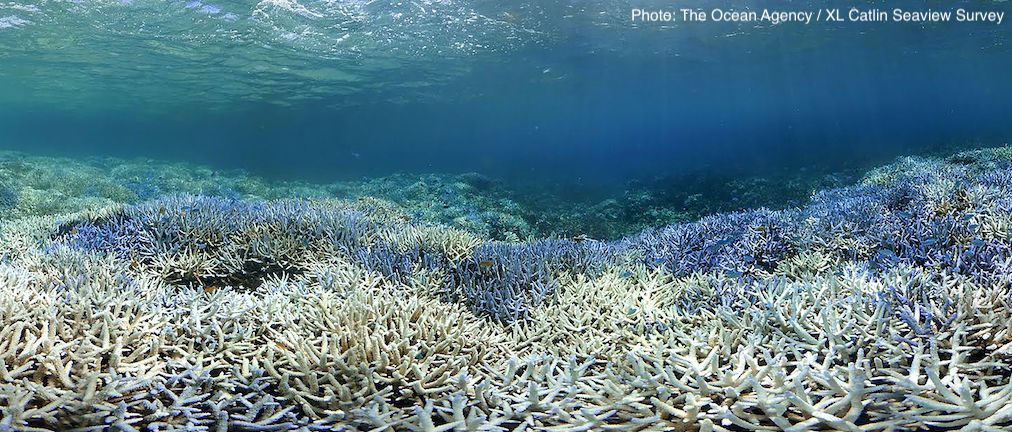News
Governing a connected ocean

News | Sep 2020
The ocean covers 71% of the world’s surface, and 43% is not under any one nation’s jurisdiction.
These areas are called Areas Beyond National Jurisdiction (ABNJ), which includes both the sea known by the more commonly known as the high seas, and the seabed beyond national jurisdiction.
Governing and safeguarding the high seas is complex and requires collaboration between regions, nations and sectors - but it’s also a crucial priority.
Due to ocean connectivity and species’ migration patterns, what happens in the high seas can seriously impact ecosystems on countries’ coastlines and national waters, and vice versa.
Wildlife doesn’t abide by international boundaries, and so area-based management tools are important in supporting the sustainable use and conservation of biodiversity.
The migration patterns of Blue Whales, Leatherback Turtles, and Green Sea Turtles are examples of the connected nature of life in the ocean.
Blue Whales in the Eastern South Pacific
Blue whales (Balaenoptera musculus) in the Southern hemisphere greatly suffered the effects of whaling in the 19th and 20th centuries, which reduced populations to 3% of their previous numbers.
The migratory patterns of Blue Whales in the Eastern South Pacific are not simple, single back and forth movements. There is evidence of this population of blue whales migrating, feeding, breeding and nursing in the waters of several countries and in the adjacent high seas.
For example, one of the whales’ most important feeding and nursing grounds is off the coast of Chilean Northern Patagonia. Telemetry, acoustic, and genetic evidence now shows whales migrating from the Chilean North Patagonia to the Galapagos Archipelago, and one blue whale swam onwards towards Peruvian waters. Blue whales have been regularly sighted as close as 60 nautical miles off the coast of Peru and as far as 1200 nautical offshore, in the high seas. The current theory is that whales from this population travel through Peruvian waters to return to the Chilean Northern Patagonia feeding ground again the following summer.
Eastern Pacific Leatherback Turtles
Leatherback turtles (Dermochelys coriacea) migrate across entire ocean basins. Because of their long migrations and life cycle, they are highly sensitive to stressors caused by human activities and are listed as Critically Endangered by the International Union for the Conservation of Nature’s Red List.
Analysis of leatherbacks’ area-use patterns shows their life history stages in the eastern Pacific. From early life stages in Central America (Mexico, Guatemala, El Salvador, Nicaragua, Costa Rica and Panama), the turtles move on to juvenile and adult foraging grounds in Peru and Chile, and migratory corridors through Colombia and Ecuador.
Further tracking work on juvenile leatherback turtles in Peruvian waters suggest there may be considerable connectivity between national jurisdictions in Pacific South America and the high seas.
Green sea turtles in the Western Indian Ocean
Green sea turtles (Chelonia mydas) use both coastal and oceanic habitats in the Western Indian Ocean for their nesting grounds, foraging sites, and migratory corridors.
After nesting, Green sea turtles travel long distances through oceanic and coastal migration routes in the Western Indian Ocean.
Some turtles tagged at nesting beaches along the coast of East Africa have migrated through several different jurisdictions along the way. Others tagged on the beaches of small islands in the Western Indian Ocean disperse widely through the high seas on their way to coastal foraging grounds.
Governing across boundaries
The migration patterns of these three species show how wildlife routinely crosses international boundaries in the ocean. The marine environment is fluid and dynamic by nature.
This is an additional complexity to address in ocean governance, especially as human activity and technological advances, including offshore energy and mineral extraction and fishing, are increasing with potential risk to the ocean and its biodiversity.
This highlights the importance of developing regional, transboundary conservation strategies, including in the high seas, that account for ocean connectivity and migratory movements.
In 2017 the UN General Assembly launched formal negotiations to create a new international legally binding instrument under the UN Convention on the Law of the Sea, to conserve and sustainably use marine biodiversity in areas beyond national jurisdiction. This process is ongoing providing a rare opportunity to solve one of the biggest barriers to biodiversity conservation across almost half of the surface of the planet.
As part of this, UNEP-WCMC has been working with partners globally to understand how to apply an ecosystem-based approach in ABNJ. This work is supported by both FAO and UNEP and funded by GEF. With support from two pilot regions and key partners, the Regional Seas organisations, a new methodology for marine spatial planning was developed. Coordination and cooperation between countries, regions and sectors is key to protecting ocean biodiversity.
Find out more about UNEP-WCMC’s work in ABNJ here.
Have a query?
Contact us
communications@unep-wcmc.org
